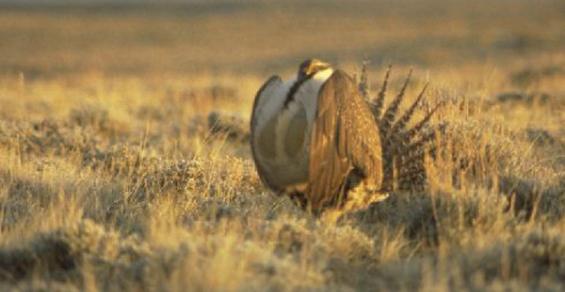Ranchers and other boots-on-the-ground land managers have long known that rotational grazing is a management tool that can improve soil and pasture health. And by improving soil and pasture health, you improve the entire soil and pasture ecosystem, not just grazing.
Now there’s a new study that adds to the body of evidence regarding this truth. Hayes Goosey is leading a unique four-year study near Roundup, Mont., to investigate a key part of sage grouse diet in spring and summer, particularly for the growing chicks. Specifically, he’s looking for arthropods that are important for nutrition: beetles, the larvae of butterfly and moths, grasshoppers and crickets, spiders, and ants.
Preliminary findings of the study after two field seasons reveal that the Sage Grouse Initiative (SGI) rest-rotation grazing program is working when it comes to boosting the abundance of arthropods. The results show that the rested or deferred pastures host the most arthropods across all species.
Goosey is an entomologist in the Department of Animal and Range Sciences at Montana State University. He initiated the project out of his own interest in conserving sage grouse and sagebrush steppe habitats, as well as ranching.
“From my perspective and SGI as a whole, the way to serve sage grouse is from these partnerships with ranches and keeping ranches on the ground and profitable and not converting them into wheatfields,” Goosey said.
Out in the sagebrush steppe, Goosey and his crew have two techniques for sampling: Pitfall traps and sweep nets. To create the traps, he digs holes in the upland shrublands and places cups inside of the holes. At night, beetles and other insects fall into the cups and can’t scramble out.
To sample arthropods above ground, the team walks along a transect sweeping the shrubs and grasses with heavy canvas nets. Next comes the laborious process of counting, sorting and identifying the catch. When it comes to determining genus and species, Goosey turns to an excellent identification specialist, Marni Rolfton, research associate at MSU.
With data in hand, Goosey compares his findings with the needs of sage grouse chicks. The first six weeks are critical, a time when mortality rates are highest and the chicks are too young to make a journey to wetlands where even more insect protein can be found. For the first 21 to 28 days, the chicks eat arthropods almost exclusively. Butterfly and moth larvae are particularly important.
So far, he’s seeing a notable trend. Taller grasses and sagebrush and less bare ground correlate with higher numbers of beetles, moth and butterfly larvae and other arthropods. Goosey points out in his two-year report that grazing systems that decrease the percentage of bare ground also increase the carrying capacity (AUMs) for livestock.
In other words, rested pastures with plentiful bugs are a good deal for cattle and sage grouse alike. As the study progresses, he hopes to have more data to lead to conclusions about insect diversity on the rested versus actively grazed pastures.




Leave A Comment